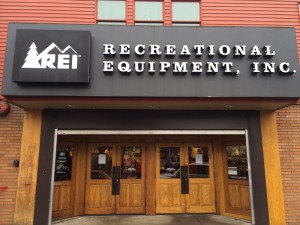So you founded your business and dove headfirst into all the excitement and drama of growth and success. Now it’s months or years later, and you’ve suddenly realized that your HR strategy (people practices) is pretty much nonexistent. You might be one of the lucky ones who just happen to have found a minute to breathe and focus on your people practices … or you might have had a serious problem come up in the business that’s forcing you to address your HR game plan fast. Either way, I’ve got good news for you: creating an exceptional workplace grounded in solid, sustainable people practices is easier than you think.
Know this first: there is no magical window of time in which to develop your HR strategy
Right now you’re probably asking yourself loads of questions, like “What am I doing to actually manage the people side of my business?”, “Is there a better way to do this?”, or the gut-clenching, “Am I even in compliance?” As scary as that can feel you’re actually in a good place.
There is no “right” time in starting, growing, and owning a business to ask these questions. A lot of clients come to me really embarrassed about the state of their people practices, or worried that they’ve somehow missed the window of time in which they should have been developing their HR strategy. The truth is, there’s no perfect time to start developing your people practices, so you can let go of any guilt or “should-have” feelings!
Start with an audit
I always recommend that you start with a baseline HR audit to get a really good understanding of how things stand right now in your business. During the audit, take a detailed look at all of the aspects of your business that touch employees: recruitment, training, onboarding, employee relations, compensation, benefits and workforce communication. You may choose to conduct an HR audit on your own or work with an HR Consultant or Employment Attorney who have expertise in this area.
Then use what you find as a baseline to understand what you’re doing well, and what you need to focus on to cultivate excellence.
Ask your employees too
Audits are great in that they give you a lot of hard data about your business, but they’re also inherently limited, especially when it comes to qualitative, softer data, so you need to make sure you’re asking your workforce what they think too.
You can do this really easily with a simple employee engagement survey, followed up quarterly with a NPS survey, which is a 1 - 2 question survey that gives you a quick “temperature check” of your business and lets employees give open-ended feedback.
Then take it even further.
Once you have this really powerful combination of hard data and insight into your employees’ thoughts and feelings, you can start working towards excellence. Identify at least one area where you could change or improve, and make that a priority for the quarter.
You’ll know that you’re actually working on something that needs improvement (instead of just shooting in the dark) because of your baseline audit, and you’ll have an easy way to check in with the results of your changes in your quarterly NPS survey. With this kind of information, the sky really is the limit, so dream big — and enjoy the benefits of a business people love working for.














